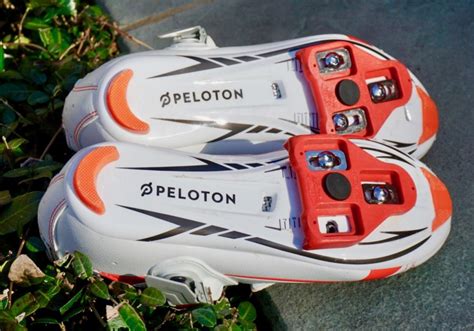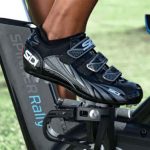If your pedals and cleats make a squeaking sound, they might need lubrication. Spray some dry lubricant with Teflon onto the sole of your cycling shoes. Check the screws are still tight on your cleats before you clip the shoes back onto your Peloton Bike.

When you’re preparing for a workout, it’s important for both your comfort and overall safety that your training equipment is working properly. This is especially important when it comes to your Peloton bike, as the pedals, shoes, and cleats work together to ensure your safety. That’s why it’s important to know why your peloton shoes are moving in the pedals!
If your Peloton shoes are moving in the pedals, you may need to adjust the pedal tension. Your Peloton shoes may also move in the pedals or feel loose for other reasons related to the pedals themselves or the cleats on your Peloton shoes.
In this article, you’ll learn how to adjust the pedal tension on your Peloton pedals to achieve a tighter fit, and what to do if tightening the pedal tension doesn’t solve the problem. Read on to learn more.
Adjusting The Pedal Tension On Peloton Pedals
To maintain a secure fit, your Peloton pedals need regular adjustment to the pedal tension to maintain a secure fit. Peloton recommends adjusting the pedal tension periodically for the best fit for you.
To adjust the pedal tension screws for a tighter, more secure fit, we’ve provided instructions for you below:
- The tension screw for each pedal is located on the underside of the pedal and has a plus sign on the right to indicate the direction for tightening the screw, and a minus sign to the left to indicate the direction for loosening it.
- Turn the resistance wheel knob completely to the right to lock the flywheel and crank knobs in place
- Using the 3mm Allen key provided with your bike, turn the tension screw by ¼ turns toward the plus sign indicated on the right of the tension screw. Continue adjusting by ¼ turns until optimal fit is achieved
- If you have tightened the tension screw too much, turn the screw by ¼ turns toward the minus sign on the left to loosen the screw
- Repeat these steps for the second pedal
Additional Adjustments to Fix Loose Fit
If tightening the tension screw on your pedals fails to address the issue, you may need to adjust or replace your Peloton shoes, cleats, or pedals. In this section, we go into how to address fit issues when adjusting your pedal tension fails to fix the problem.
Your Cleats May Not Be Attached Properly
If your cleats are not attached to your Peloton shoes properly, they may cause your shoes to fail to clip securely to the pedals. This can cause the shoes to feel too loose or too tight when clipped into the pedals.
When attaching or adjusting the cleats on your Peloton shoes, follow the steps below to ensure a secure fit:
- Place the cleat over the three screw holes on the bottom of the shoe
- Make sure the cleat is facing forward and lined up with the toe and directly on the indicator line that runs from heel to toe
- Make sure the middle of the cleat is positioned across the ball of your foot and as close to the inside arch of the shoe as the washers will let you go
- Tighten the screws on the bottom of your shoes with the included 4mm hex key until securely fastened to the cleat
To make sure that the cleats are fastened properly and aligned to distribute pressure across the balls of your feet, begin to pedal. Your foot position should place the ball of your foot directly over the axle of the pedal.
If you feel any pain or discomfort in your feet or legs, your cleats may be misaligned. If adjusting fails to fix the issue, the cleats may need replacing. If the cleats are functional, you may need to replace your Peloton shoes.
Your Peloton Pedals Or Shoes May Need to be Replaced
The tension screws may fail to tighten properly onto the pedals due to normal wear and tear on the pedal itself. This is a normal occurrence caused by repeated use of the tension screws and routine replacements are necessary to prevent stripping the screws themselves.
Peloton recommends replacing the pedals on your bike once a year to maintain the function and safety of your device.
How to unclip peloton shoes from the bike?
First, we are going to take a look at the process of unclipping your Peloton shoes from the bike under normal situations. After finishing your workout, decrease the pedal speed slowly until your bike comes to a stop. Alternatively, you can instantly stop the bike by pressing down the resistance knob.
How to fix a Peloton bike that makes a clicking sound?
Check that the cleats of your Peloton Bike are tightly screwed into your shoes. Use a screwdriver to give them a tightening as needed. A clicking sound may also come from the crank wheel. In this case, remove the wheel covers on both sides by easing them around the pedals. Next, use your screwdriver to tighten all the crank wheel screws.
What are some common problems with peloton bikes?
Common problems with Peloton Bikes include having no power, making noises, or issues with the touchscreen. Some other problems may be connectivity issues, an unstable bike, issues when pedaling, or the cleats on the Bike.

